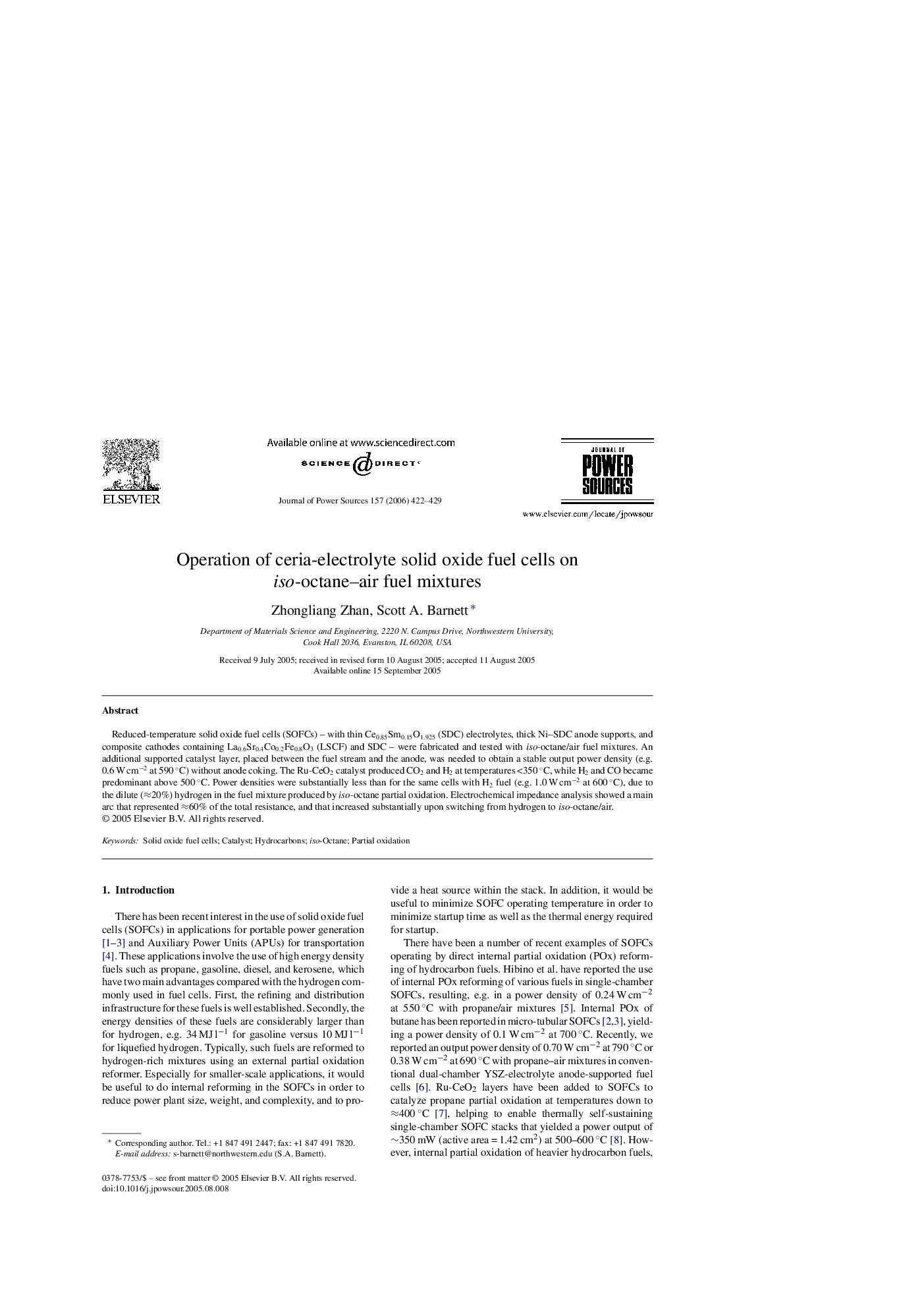| Article ID | Journal | Published Year | Pages | File Type |
|---|---|---|---|---|
| 1292689 | Journal of Power Sources | 2006 | 8 Pages |
Reduced-temperature solid oxide fuel cells (SOFCs) – with thin Ce0.85Sm0.15O1.925 (SDC) electrolytes, thick Ni–SDC anode supports, and composite cathodes containing La0.6Sr0.4Co0.2Fe0.8O3 (LSCF) and SDC – were fabricated and tested with iso-octane/air fuel mixtures. An additional supported catalyst layer, placed between the fuel stream and the anode, was needed to obtain a stable output power density (e.g. 0.6 W cm−2 at 590 °C) without anode coking. The Ru-CeO2 catalyst produced CO2 and H2 at temperatures <350 °C, while H2 and CO became predominant above 500 °C. Power densities were substantially less than for the same cells with H2 fuel (e.g. 1.0 W cm−2 at 600 °C), due to the dilute (≈20%) hydrogen in the fuel mixture produced by iso-octane partial oxidation. Electrochemical impedance analysis showed a main arc that represented ≈60% of the total resistance, and that increased substantially upon switching from hydrogen to iso-octane/air.
